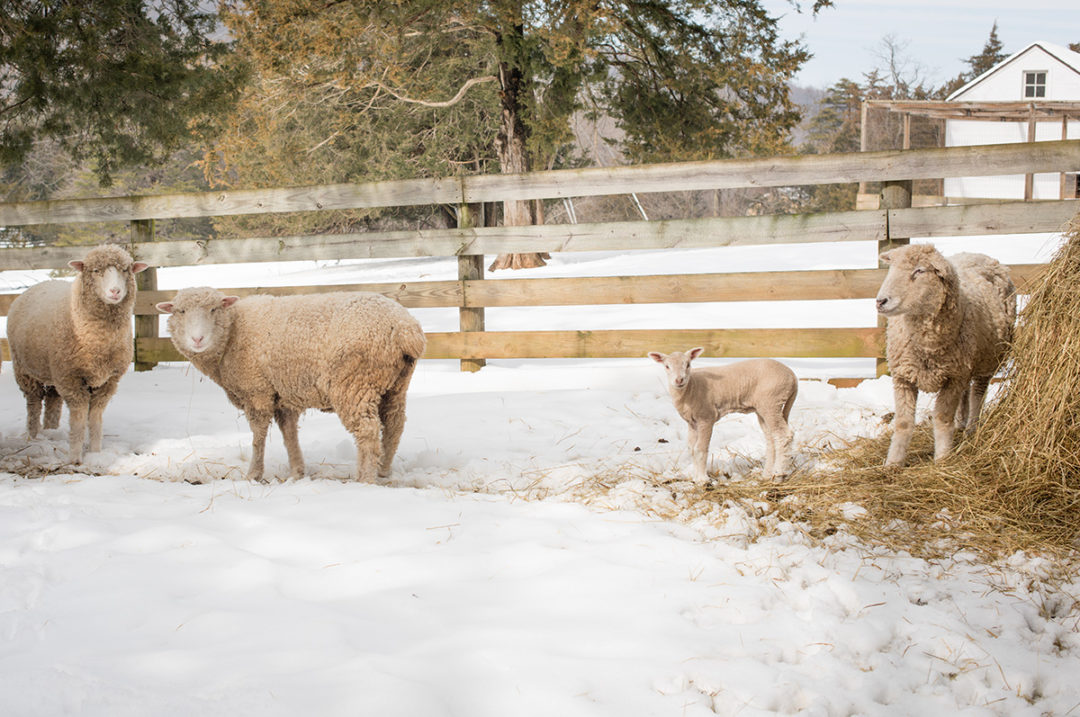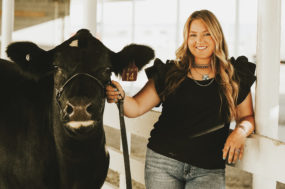Winter. Sheep operations around the country are gearing up for lambing. Jugs, water lines, grain feeders, mixing pens, vaccines, medicines, propylene glycol for ketotic ewes, the veterinarian’s phone number on speed dial in your cellphone – it’s the planning we all do.
And also … someplace to raise the orphan lambs. Stockpile the bags of milk replacer, check the bottles and nipples, find that self-feeding bucket, and delegate some labor to take care of them. Oh my, those orphan lambs. Not your favorite activity, but they are an inevitable part of the lambing season. Sometimes you wonder if you could sell them cheaply to someone who really wants to raise them.
More than a few times in the past, I’ve written about orphan lambs – how to house them, how to feed them, how to wean them early. There has been quite a lot of research on rearing orphans (lambs and calves), including some of my own research. Over the years, scientists have developed solid principles for rearing and early weaning these animals. This work is very germane today. Higher lambing percentages result in more orphan lambs. Do you see where this is going?
Science has shown us how to design self-feeding pens for these lambs and use cool milk replacer, and these techniques indeed reduce health problems and save labor. The successful rearing of the occasional orphan lamb is a nice spinoff of this work.
But here’s an insight: The research on orphan lambs was not really designed to support the incidental orphans that occur in small flocks when grafting and all other techniques fail. The fundamental reason for this research (and for the use of public funds) was to support commercial flocks with relatively large numbers of ewes in high levels of production, so that shepherds could rear orphans as an essential and efficient part of their operations. Huh? Folks don’t usually use the terms “efficient” and “orphan lamb” in the same sentence. But please read on, because it definitely can be done.
This concept was really brought home to me last year with a large flock I work with of 3,000 crossbred ewes raised on beautiful grass pastures, including nearly 800 ewe lambs. Lambing occurs once a year, in a large barn over five to six weeks in the spring. This flock has had excellent production over the years, but last year was special. Last year, the adult ewes dropped a lamb crop of nearly 220%, and the ewe lambs dropped around 160% (calculated as the number of live lambs per ewe lambing). A lambing percentage this high means lots of triplets, some quads and very few singles. But ewes are ewes, and in spite of our best efforts, some cannot raise every lamb born to them. The result: lots of orphan lambs.
The flock managers are very shrewd. They plan meticulously for these orphans. Extra lambs are separated from any ewe that can’t raise twins or triplets on pasture. Also, there are the “come-back” lambs. These are lambs that first go out onto pasture with their ewes, but for some reason don’t do well there. There can be many reasons for this: small size, lack of milk, sharp teeth that hurt the dam, etc. In any case, these lambs are pulled from their ewes. They come back to the barn and are put into the orphan pens.
After each lambing for the past few years, this operation routinely and successfully raised a couple of hundred orphans, which is pretty impressive. But last year … well, last year’s high lambing rate resulted in more orphans. A tidal wave more. Last year, they raised a total of 1,250 orphan lambs.
But the system worked. They used a high-quality milk replacer and weaned those lambs onto a nutritious and palatable starter diet at 3 to 4 weeks old. They rarely lost any lambs. These were healthy, frisky lambs that did well at weaning, adapted quickly to a dry diet, grew rapidly and sold nicely in the market. The managers estimate they got these lambs to market for less than 90 cents per pound. You can do the math.
Basically, this operation used the best knowledge we’ve developed to raise orphan lambs efficiently and safely, in large numbers, with a reasonable amount of labor. They did not consider orphan lambs as excess baggage that had to be grudgingly “dealt with.” Instead, they managed them as the bonus lambs that you’ve heard about for years, where most of the overhead costs are allocated to the ewes and their ewe-reared lambs, so the expenses allocated to these orphans were minimal.
With the current national emphasis on increased lambing percentage, we can surely expect that some flocks will have many more orphan lambs. How many? Well, I started to do some calculations. You know – start with an imaginary commercial flock of X number of adult ewes, with ewe lambs at a 20% replacement rate. Select a lambing percentage higher than 200% for the adults and expect 10% or 15% or 20% of the ewes unable to rear extra lambs (you choose your favorite percentages). Then play with the numbers, maybe do some algebra using simultaneous equations. (We all remember how to do that, don’t we?) Then come up with a possible number of orphans that we should anticipate.
Frankly, that’s a lot of detailed work based on estimates that may be questionable. So I put down my calculator, stepped back and realized there is a better way to plan for orphans, a business way for larger operations. We can base the numbers on our experience.
That 3,000-ewe flock with a 220% lambing rate for the adult ewes produced 1,250 orphan lambs – which was 42% of the total number of ewes including the ewe lambs. OK, I’ll completely agree with you that this is a simplification, and that this number may be specific to their specific management style. So let’s be conservative – let’s say 33%. Now we have a workable rule of thumb: 33% orphan lambs in a commercial flock with a lambing rate of 220%. If the lambing rate goes up, then we can increase the orphan lamb rate to 38% or 40% or 42%, etc., based on our experience.
Then we can apply this rule of thumb to make concrete plans for raising these orphans. For example, we can anticipate that a 600-ewe flock with a 33% orphan rate will generate 200 orphan lambs. For a 2,000-ewe flock, we can anticipate approximately 650 orphan lambs. Then we can build our pens in advance and design an efficient milk feeding system accordingly. By lambing time, we’re all set up for these orphans and ready to go. No wild surprises here, no frantic scrambling or heroic saves.
What does this mean? It means we can really look forward to those high lambing rates because we have the tools to handle the extra lambs. We can anticipate a large number of orphans and incorporate the rearing and early weaning of them into our business plans. We can use the best research available to guide our procedures, and we can spend money for the best equipment and milk replacers because, in the end, these lambs can be nicely profitable. And perhaps, most importantly, a large commercial sheep flock can use these concepts as a routine part of their operation. This is thinking outside the box. Large numbers of ewes, large numbers of orphan lambs, no problem.
I like history, so this concept brings us to a legendary program that even today captures our imagination. For 18 months just prior to the Civil War, the celebrated Pony Express carried letters across the barren ranges of the American West from Missouri to California. But it was a dangerous business, and many riders never made it to their destinations. A California newspaper was reputed to publish the following advertisement for riders: “Wanted. Young, skinny, wiry fellows. Not over 18. Must be expert riders. Willing to risk death daily. Orphans preferred.”
The Pony Express never turned a profit; it lost money from the day it began. But sheep operations that really know how to raise orphan lambs … well, that’s a horse of a different color.



.jpg?t=1687979285&width=640)



